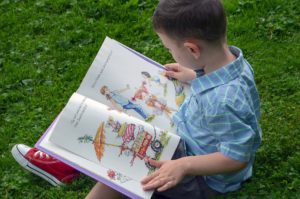 Book reading is a fantastic place to learn about the meaning of words and the pleasure of sharing a story. Turning reading into an interactive experience is the key to the development of communication. One of the best things about books is that the pictures and words are always there and can be read again and again. Unlike “speech” which disappears as soon as it is spoken, the stories and words in the books come back to us the same way every time we read the book. This makes learning new words much easier for the child.
Book reading is a fantastic place to learn about the meaning of words and the pleasure of sharing a story. Turning reading into an interactive experience is the key to the development of communication. One of the best things about books is that the pictures and words are always there and can be read again and again. Unlike “speech” which disappears as soon as it is spoken, the stories and words in the books come back to us the same way every time we read the book. This makes learning new words much easier for the child.
When you read a book with your child a lot of learning can happen.
- Child builds a relationship with the parent and enjoy a feeling of closeness
- Child discovers the pleasure of sharing books.
- Child learns a new word and sees the words that he/she already knows used in a new context.
- Child is transported to interesting places and situations
- Child is also encouraged to think beyond the words written on the pages and learn to answer questions
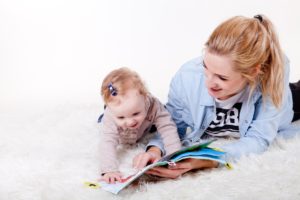
Shared book reading refers to the practice of sharing or reading a book with a child and is one effective way that helps early language development. This includes sharing books with preschool
children before they have begun to read themselves and reading books with older children, whether individually or in groups.
Shared book reading supports a range of early language skills including vocabulary growth (Elley,1989: Farrant & Zubrick,2012), narrative and conversation skills (Morrow, 1998: Resse 1995), future reading ability (Bus et.al.,1995), print awareness (Justice & Ezelle 2000, 2004), grammatical development, and phonological awareness (Chow et.al 2008; Lefevre et.al 2011). A lot of research has been done throughout the years to find techniques or strategies that could be useful during shared reading.
As part of the It Takes Two To Talk® and More Than Words® Hanen Programs for children with Autism, Social Communication Difficulties and other language delays, parents are advised to:
- Choose the right books (Picture books, Interactive books, sensory books, predictable books, simple story books, home-made books, etc., depending on your child’s interests)
- Read the right way by creating interest and excitement, following their lead, etc.
- Say less, stress, go slow and show (pictures/printed word/actions and gestures/objects)
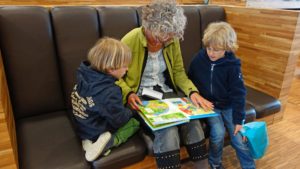 There are different forms of book reading; Interactive or Dialogic reading is one such form. This involves using a specific set of techniques to scaffold an interactive conversation between the adult and child about the book. It is the use of a series of conversational strategies to scaffold an interactive conversation between the child and the caregiver while reading. There are various strategies, according to Whitehurst et.al 1988, that can be used to encourage this form of book reading.
There are different forms of book reading; Interactive or Dialogic reading is one such form. This involves using a specific set of techniques to scaffold an interactive conversation between the adult and child about the book. It is the use of a series of conversational strategies to scaffold an interactive conversation between the child and the caregiver while reading. There are various strategies, according to Whitehurst et.al 1988, that can be used to encourage this form of book reading.
- PEER strategies which follow a sequence:
- Prompting the child to say something about the book – This helps to get your child’s attention on the book and helps to engage him/her in the story. E.g.: When pointing to a picture in the book; “oh what do we have here? Is that a balloon?”
- Evaluating the child’s response – Wait to see how your child responds when you prompt and respond accordingly. E.g.: “Yes, that’s a balloon”
- Expanding the child’s response – Elaborate what your child has said by adding in other relevant information. E.g.: “that’s a big green balloon. We used them at your birthday party”
- Repeating the prompt to help the child learn from the expansion
A fundamental element of dialogic reading is the use of prompts (mentioned below) to begin the PEER sequence while reading with a child.
- CROWD, which stands for five recommended prompts, as follows:
- Completion – In this, you ask your child to finish a sentence by filling in the blanks and wait for them to respond. E.g.: The wolf blew down the house made with…
- Recall – Ask your child to share details of the book. This helps us understand whether they have understood the story. E.g.: Why do you think the wolf blew up the house… and then what happened?
- Open questions – When asking questions that do not have a direct one-word answer, we create opportunities for our children to interact with us and ask questions themselves. This gives them more freedom to interact with the elements of the book and not just learn the story.
- Wh-questions – Make use of the WH questions for your child to pick up the elements of the story and learn new vocabulary.
- Distancing questions – Create a distance from the time you read the book to the discussions you have about it. This can be helpful in making connections with the story that is read and its applications into real life.
- Pause Reading Intervention: Here, parents use an interactive pause-reading style and PROB is an acronym to remember to implement these strategies.
-
- Pausing at each page turn to let the child talk first,
- Responding to what the child says or points to,
- Using Open-ended prompts (i.e., asking a contingent open-ended question), and
- Boosting what the child says by rephrasing or adding.
-
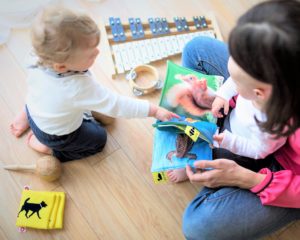
While carrying out all these strategies, and to make sure the parents/caregiver is successful in their attempts, it is important for them to make a note of some of the suggestions below. As the child’s interest grows, you can add more information and enable more back and forth with the child.
- Choose a space free of distractions (e.g., television and toys)
- Create an area that is comfortable and inviting
- Sit opposite each other or face to face, so the child can see the caregiver’s face and the book
- Let the child hold the book and turn the pages if they want to.
- Take turns looking at the pictures or pointing to pictures or turning pages.
- Change the words in the book to make the reading more interesting and exciting. You don’t have to use the words in the book verbatim. Add in exciting words like ‘Oh-oh’, ‘Oops’, ‘Wow’, ‘Look at that!’, ‘Woah!’, ‘Oh no!’ etc.
- Follow the child’s lead and read the book their way
- There is more than one way to read a book – You don’t always have to start at the beginning, you can skip pages or not finish the book, you can just talk about the pictures and not read the book, you can change the words, you can read the same book again and again, even in one sitting!
- Be flexible about what time of day you read. Choose a time of day that suits the parent/caregiver and the child
- Let them sit by you or move around and listen, if they don’t want to sit still
- Have fun with the book!
 AT PLAYSTREET, it first and foremost important to build reading around the interests of the child and make the whole activity exciting, fun and interactive. We believe that using props, puppets/objects, voice modulation, movements, gestures, etc. are important ways to enable more back and forth interaction with the child. The more a child is having fun, the more they learn! And with books as the resource, there is just so much that they can learn.
AT PLAYSTREET, it first and foremost important to build reading around the interests of the child and make the whole activity exciting, fun and interactive. We believe that using props, puppets/objects, voice modulation, movements, gestures, etc. are important ways to enable more back and forth interaction with the child. The more a child is having fun, the more they learn! And with books as the resource, there is just so much that they can learn.

Come talk to us if you need more help with this… Happy reading!
REFERENCES:
1. Noble, C., Sala, G., Peter, M., Lingwood, J., Rowland, C., Gobet, F., & Pine, J. (2019). The impact of shared book reading on children’s language skills: A meta-analysis. Educational Research Review, 28, 100290. https://www.sciencedirect.com/science/article/pii/S1747938X18305116
2. Noble, C., Cameron-Faulkner, T., Jessop, A., Coates, A., Sawyer, H., Taylor-Ims, R., & Rowland, C. F. (2020). The impact of interactive shared book reading on children’s language skills: A randomized controlled trial. Journal of Speech, Language, and Hearing Research, 63(6), 1878-1897. https://pubs.asha.org/doi/pdf/10.1044/2020_JSLHR-19-00288
3. Cárdenas, K., Moreno-Núñez, A., & Miranda-Zapata, E. (2020). Shared Book-Reading in Early Childhood Education: Teachers’ Mediation in Children’s Communicative Development. Frontiers in Psychology, 2030. https://www.frontiersin.org/articles/10.3389/fpsyg.2020.02030/full
4. Elley, W. B. (1989). Vocabulary acquisition from listening to stories. Reading research quarterly, 174-187.
5. Farrant, B. M., & Zubrick, S. R. (2012). Early vocabulary development: The importance of joint attention and parent-child book reading. First Language, 32(3), 343-364.
6. Justice, L. M., & Ezell, H. K. (2000). Enhancing children’s print and word awareness through home-based parent intervention. American Journal of Speech-Language Pathology, 9(3), 257-269.
7. Justice, L. M., & Ezell, H. K. (2004). Print referencing.
8. Bus, A. G., Van Ijzendoorn, M. H., & Pellegrini, A. D. (1995). Joint book reading makes for success in learning to read: A meta-analysis on intergenerational transmission of literacy. Review of educational research, 65(1), 1-21.
9. Chow, B. W. Y., McBride-Chang, C., Cheung, H., & Chow, C. S. L. (2008). Dialogic reading and morphology training in Chinese children: effects on language and literacy. Developmental psychology, 44(1), 233.
10. Lefebvre, P., Trudeau, N., & Sutton, A. (2011). Enhancing vocabulary, print awareness and phonological awareness through shared storybook reading with low-income preschoolers. Journal of Early Childhood Literacy, 11(4), 453-479.
11. Morrow, L. M. (1988). Young children’s responses to one-to-one story readings in school settings. Reading research quarterly, 89-107.
12. Reese, E. (1995). Predicting children’s literacy from mother-child conversations. Cognitive Development, 10(3), 381-405.
13. Kleeck, A. V. (2008). Providing preschool foundations for later reading comprehension: The importance of and ideas for targeting inferencing in storybook‐sharing interventions. Psychology in the Schools, 45(7), 627-643.
14. Elaine Weitzman. (2017) It Takes two To Talk: A Practical Guide for Parents of Children with Language Delays. Publisher: Hanen Center
15. Fern Sussman. (2012). More Than Words: A Parents Guide to Building Interaction and Language Skills for Children with Autism Spectrum Disorder or Social Communication Difficulties. Publisher: Hanen Center
Other blog posts that might be of interest:
1. To know more about the Hanen programs, please go to playstreet.in/hanen-program/
2. Importance of movement for Children: https://www.playstreet.in/2021/10/21/the-importance-of-movement-for-children/
3. ARII Model – Learning Language through Play: https://www.playstreet.in/2021/09/30/learning-language-through-play-an-arii-model-perspective/
4. Developing Attention in Children: https://www.playstreet.in/2020/10/01/developing-attention-in-children/
5. Language Stimulation: https://www.playstreet.in/2020/08/19/language-stimulation/
6. Learning Styles in Children: https://www.playstreet.in/2020/08/04/learning-styles-in-children/
7. Role of AAC in Communication: https://www.playstreet.in/2020/07/16/role-of-aac-augmentative-and-alternative-communication-in-communication/
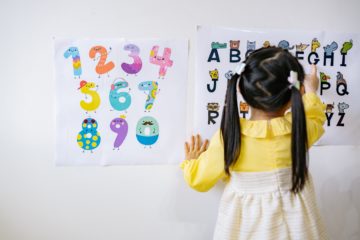
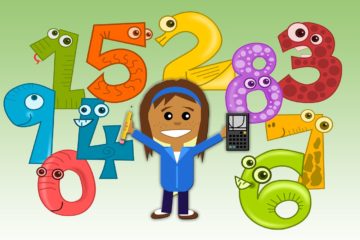
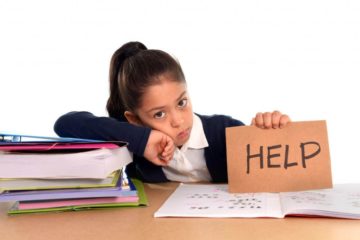
0 Comments